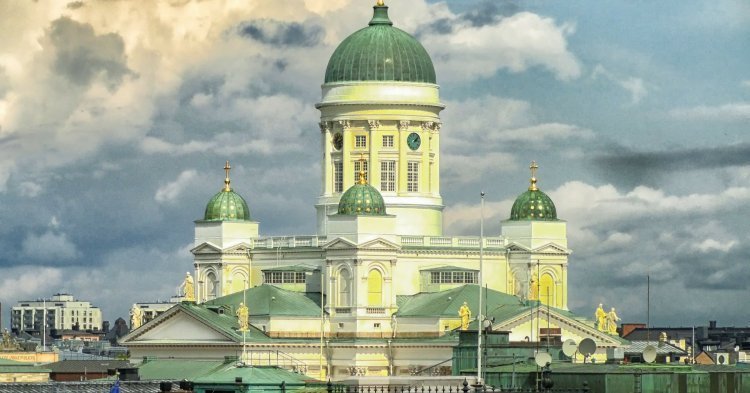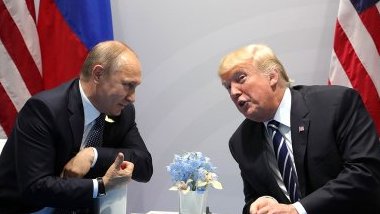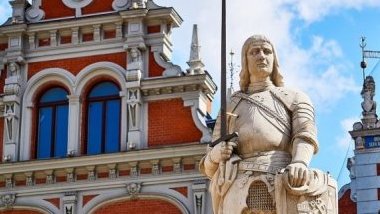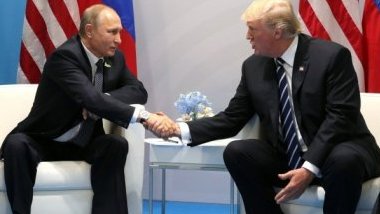So, two of the most powerful and dangerous world leaders are meeting, or at least are probably meeting, given the unpredictable nature of the American President. After all, the summit with Kim Jong Un nearly did not happen. John Bolton, the US National Security Advisor, worked hard for organising this meeting with the Russian President, but Donald Trump has esteem and respect for no one but himself. So, let’s carefully wait for what will happen in Helsinki.
So yes, the small Finnish capital (650,000 inhabitants) was chosen to host the summit. One could wonder why Helsinki, situated in the North East, far from the centre of Europe. Yet, the choice is far from being trivial. Helsinki was the stage of many bilateral meetings between the two countries, during the Cold War but also after 1991. The political and strategic situation of Finland explains why this has been the case.
Finland, a neutral country on coercion
Still nowadays, coming back to 1939 is still necessary to fully understand the Finnish situation. That year, the USSR invaded Finland as the country refused to cede vast territories to Stalin in East Karelia, strategic lands as they are very close to Leningrad. The “Winter War” then started and lasted for 104 days, stage of a tenacious resistance of the Finns facing the Red Army. Nevertheless, Finland finally had to cede 10% of its territory, including the big town of Viipuri (now Vyborg). The Continuation War between 1941 and 1944 and the Lapland War in 1944 and 1945 did not change anything. After 1945, the country found itself deprived of part of its “historic” territories (Karelia being considered as the cradle of the Finnish national awakening).
But Finland kept the most important: its sovereignty. The USSR gave up on annexing the country with the Paris Treaty in 1947, as opposed to the unfortunate Baltic countries. Finland’s heroic resistance during the wars with the Soviets certainly has something to do with it. Finland was however put in a situation of “forced” neutrality: the USSR couldn’t have accepted a neighbouring country, with which it shared such a long border, joining NATO. This neutrality was institutionalised by the “Paasikivi-Kekkonen doctrine” (named after the two Finnish Presidents in office between 1946 and 1981): a strict neutrality to reassure the Soviets. The word “Finlandisation” refers today to the influence that a powerful country can have on the foreign policy of a neighbour.
Yet, Finland did not become a ’popular democracy’, even after 1948, when Czechoslovakia finally fell into Moscow’s influence. The “Paasikivi-Kekkonen doctrine” is very likely to be the cause of this “miracle”. Despite not benefiting from the help of the Marshall Plan, Finland was thus able to restart its economy and keep capitalism and private property. In many ways, the small Nordic country was more liberal than countries like France or the United Kingdom, and privatisations were avoided as far as possible. Finland even joined the Nordic Council in 1955, after the failed attempt to form a regional defence union. Despite the presence of Iceland, Norway and Denmark, members of NATO, Finland managed to join onto a regional entity of Western influence, without offending the USSR.
Helsinki, at a crossroads of two worlds
The Finnish political class has indeed always wanted to keep good relations with the powerful neighbour. Within the different non-communist parties, some pro-Soviet factions exerted more or less influence on the political lines. This did not prevent Helsinki from being a major actor of the Détente (Translator’s note: period of the Cold War of a relaxation of the tensions, dated between 1963 after the Cuban Missile Crisis and 1979-1980 with the Soviet invasion of Afghanistan). The Conference on Security and Cooperation in Europe (CSCE) from 1973 was the climax of this strategy, operated by the President Urho Kekkonen, together with the American President Richard Nixon, the CPSU Secretary General Leonid Brezhnev and the German Chancellor Willy Brandt. For more than one year, until the final Helsinki Accords on 1st August 1975, the Finnish capital was the centre of the world, where American and Soviet delegations, as well as their respective allies and non-aligned countries negotiated cohabitation in Europe. For the first (and last) time, the whole European continent (except Albania) and the two superpowers met to discuss East-West relations. Helsinki made history by being the meeting point between two worlds.
Since 1975, the Finnish capital has indeed been the site of other meetings between Americans and Russians: in 1990 between George H.W. Bush and Mikhail Gorbachev, in 1997 between Bill Clinton and Boris Yeltsin, and so in 2018 between Donald Trump and Vladimir Putin. The spirit of the CSCE having gone down in history, “neutral” cities as Vienna or Geneva could perfectly have taken Helsinki’s place. Still nowadays, Finland is not a member of NATO, even if the eventuality of joining seriously arose in 2014, when the Ukraine crisis and the annexation of Crimea broke out. A small gesture towards Russia, weakened by the collapse of the USSR. Finland nevertheless joined the European Union in 1995. The country cannot be regarded as a neutral one anymore, even if it was before the collapse of the USSR.
Are we witnessing the “Finlandisation of the entire Europe”?
On 16 July, Donald Trump and Vladimir Putin should discuss Russian-American relations, and the Syrian and the Ukrainian wars. It is very hard to read Trump’s mind about Russia. Before the Republican primary, Donald Trump criticised Obama’s softness facing Putin. The candidate Trump praised the Russian President to the skies. The President Trump wavers between firmness and admiration for the Russian regime. Vladimir Putin, for his part, thought he could easily influence the billionaire, but it appears to be much more complicated than expected. The outcome of the meeting is difficult to predict, especially since, just before landing in Finland, Donald Trump will have been in Brussels for the NATO summit.
Nevertheless, one thing seems to bring the two Presidents closer: their will to destroy the EU, or at least to weaken it lastingly. Donald Trump hates the EU because of commercial surplus and apparently unfair business practices. Vladimir Putin fears more than anything the EU influence in the former Soviet orbit, and swallowed neither the different EU enlargements in 2004, 2007 and 2013 nor the Caucasian and Balkan countries joining NATO. A completely divided Europe would serve the two leaders’ purpose, who are doing everything they can to exacerbate the current tensions. This seems to work, especially in Central Eastern Europe.
Can the European Union become a “big Finland”, paralysed in its foreign relations and caught in a vice by the schemes of two hostile powers? The risk is not negligible, even if the EU remains attached to its relations with the United States. In all likelihood, Donald Trump will have disappeared from the radars in 2024 at the latest, and Vladimir Putin could leave the Kremlin the same year. Even so, making progress in a “Europe of defence” is necessary. The Permanent Structured Cooperation (PESCO) will clearly not be enough to strengthen the defensive capacity of the EU. A coherent Common Foreign and Security Policy (CFSP) is needed, serving a common capacity and a European defence industry. Such proposals are truly vain wishes, but as the small Finland, not so long ago, the European Union has to prove its capacity of resilience in the face of global instability.






Follow the comments: |
|
